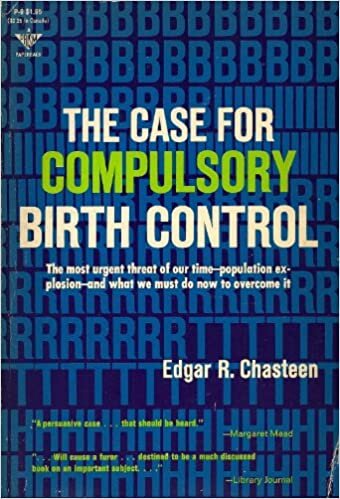Engaging the Doctrine of Revelation - A Review
One of the biggest divides between Roman Catholics and Protestants has been the understanding of the relative weight of authority of the Church and Scripture. Roman Catholics have tended to have a very high view of both sources of authority with equal or nearly equal weight given to both when making doctrinal determinations. Protestants, with their famous motto sola scriptura have tended to minimize the importance of church tradition in understanding doctrine.
Many of the radical reformers (i.e., Anabaptists) and contemporary fundamentalists have clung to Scripture alone, when the reality is that suprema scriptura is probably more consistent with the intent and practice of the reformation. Scripture alone is the supreme authority in making doctrinal determinations. However, if Church tradition is entirely neglected and a foundation for doctrine is laid only on one’s own interpretation of Scripture, then Mormonism, the Campbellite doctrine of baptismal regeneration, and Charles Finney’s (near) Pelagianism is a likely result. “No creed but the Bible” is a warning sign that heresy is soon to come. This is a pattern that has been reinforced by Church History.
On the other hand, the approach Matthew Levering takes in Engaging the Doctrine of Revelation: The Mediation of the Gospel through Church and Scripture, is not correct. Levering is Roman Catholic. Therefore, when he finds a dual source for revelation in both the Church and Scripture, it is not surprising. His conclusions, like my own, were likely to go no farther than his presuppositions. However, Levering makes the case so clearly that, were I to be converted to a Roman Catholic understanding of revelation, this would be the sort of argument that I would find most convincing.
Summary
After the introduction, which surveys some of the previous academic volumes on this topic, the book is divided into eight chapters. In each of the chapters Levering explains how divine revelation is mediated by the Church through various means. Chapter One begins with revelation mediated through the outward motion of the Church as she fulfills her mission. As the Church participates in the self-denying missio Dei, she demonstrates the very nature of God to herself and the world. The second chapter focuses on revelation experienced through the Church’s liturgy, which is considered a demonstration of God’s character on public display.
Levering then shifts to treating revelation and the hierarchical priesthood, arguing that the accepted hierarchy of the Roman Catholic (and some “high church” Protestant denominations) affirms Jesus’ design for the Church, and represents divine revelation. This is, I think, the weakest of the chapters because there is no clear logical basis for this assertion. Chapter Four relates the relationship between the gospel and revelation. While Chapter One focused mostly on the Church’s collective demonstration of revelation through action, this section zooms in on the life of the individual as impacted by the gospel.
Chapter Five explains the necessity of Tradition and Levering’s belief that Church Tradition has been faithfully transmitted in much the same way Scripture has been transmitted. Levering seems to beg the question in this chapter, as can be seen in his introductory comments that “divine revelation has a specific cognitive content that must be transmitted. Tradition cannot be less than this.” This is valid in the way that Levering intends it only if you assume the premise he is trying to prove. The sixth chapter moves into the relationship between revelation and the development of doctrine, arguing that the Roman Catholic Church has, necessarily, been faithful in transmitting doctrine in the same manner that Scripture has been faithfully transmitted.
The next chapter deals with revelation and biblical inspiration. This is a more helpful chapter, though Levering’s conclusions concede too much ground. He points out the difference between modern expectations for historical and scientific accuracy, arguing for more latitude in interpreting Scripture so that contemporary hermeneutic constraints are not applied to an ancient document. At the same time, Levering’s approach allows the denial of the historicity of significant events without clear guidance as to how one would have faith in certain facts over others. Therefore, he affirms the historicity of the resurrection, which is of first importance, but the same arguments he uses to allow for denial of other historical events could be used to undermine that one. This is problematic.
Chapter Eight closes the volume exploring some of the relationship between Hellenistic philosophy and Scripture, particularly places where Levering believes such philosophical elements were imported (not merely referenced) in Scripture. His conclusion in this chapter is that “we should view Hellenistic philosophical culture as providentially providing the scriptural communication of divine revelation with some important and true insights about God.” It would be easy to overreact to this statement, because it seems to imply too strong a link between pagan philosophy and Scripture. It would be better had Levering nuanced his position to argue Hellenistic provided a helpful framework for expressing truths about God, which is more likely the case. In that sense, such philosophies shaped Scripture, but it does not seem they were a source for divine revelation, as it were.
Analysis
While I appreciate what Levering has done here I am unconvinced. His scholarship is of high quality and his summaries of many different thinkers are fair and accurate, however his case is built upon presuppositions he never adequately supports. His purpose is “to explore the missional, liturgical, and doctrinal forms of the Church’s mediation of divine revelation and to appreciate Scripture’s inspiration and truth in this context.” This is admirable, except that it assumes that the Church and the Church alone can mediate divine revelation. It also seems to imply that the Church has faithfully done so through its history. Levering provides no reason to suppose this is so and history, at least as seen from this Protestant’s perspective, seems to argue otherwise.
Additionally, in trying to argue for the consistent mediation of divine revelation through the Church as a close analogy to that mediation through Scripture, Levering does more to denigrate Scripture than to elevate the Church. He writes,
“I agree with Gunton’s view that Scripture’s truthfulness does not depend on an absolute lack of any kind of error, just as I agree with his insistence that there has been no rupture in the mediation of ‘certain beliefs about God, Christ, salvation, the church and the work of the Spirit.’ (26)”
He goes on,
“In my view, we need not claim for the later Church the same ‘relation to revelation’ as the apostles, but we can still argue that the Church, like the prophets and apostles, mediates divine revelation in the process of appropriating it under the guidance of the Holy Spirit. Without placing the Church over revelation, the Spirit can guarantee the Church’s preservation from error in its definitive interpretations of revelation––which differs from guaranteeing the truthfulness of everything the Church says and does. This perspective enables us to give due weight to ‘the church of the living God, the pillar and bulwark of the truth’ (1 Tim. 3:15). IN short, we can accept the existence of errors within the Church’s works and teachings over the centuries, so long as we do not suppose that these (reformable) errors produced a rupture, that is to say a false definitive doctrine about faith or morals in the heart of the transmission of revelation. (27)”
I quote this section at length because it is assumed and not supported throughout the remainder of the argument. To my mind, Levering needed to show how this could be so. Instead, he assumes this and shows how he thinks it comes to pass. Hence the book has a great deal of explanatory power, but little chance of convincing those skeptical of this position. This, I think, is the critical weakness of the volume.
Overall, though, this volume is well written and may replace Avery Dulles’ book, Models of Revelation. Having done a fair amount of reading on this topic, it is the best explanation of a Roman Catholic understanding of the doctrine of Revelation I have encountered. I would recommend it to those seeking to meaningfully engage in inter-denominational dialogue on this topic. Levering is an excellent scholar, whose work on Augustine I have benefited from in the past. This book is a helpful addition to the discussion, but it is far from the final word.
Note: A gratis copy of this book was provided by the publisher with no expectation of a positive review.


































